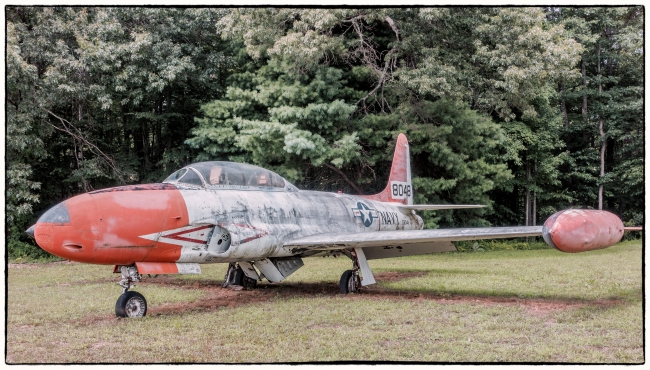According to the Museum’s website (which also provides technical specifications):
THIS AIRCRAFT IS ON LOAN FROM THE NATIONAL NAVAL AVIATION MUSEUM, PENSACOLA, FLORIDA
With the advent of the jet fighter in the late 1940’s new demands were put on pilots and there was a need for a jet trainer aircraft. The solution was to extend by about three feet the fuselage of the U.S. Air Force’s first operational jet fighter, the P-80/F-80, to allow for a second cockpit with dual controls. The first flight of this new trainer, designated T-33 for the Air Force and TV-2 for the Navy, took place in March, 1948.
The “Shooting Star” proved to be a very capable trainer and was built until 1959 with over 6,500 produced. It took on additional roles as well in reconnaissance, drone directors and target towing. Due to the Cold War, their use was not limited to the U.S. and they also went into the inventories of many U.S. allies.
While the TV-2 was used by the Navy in land-based training, Lockheed subsequently developed the T2V/T-1A “SeaStar” for aircraft carrier training. The design also became the basis for Lockheed’s F-94 “Starfire” which was the Air force’s first jet powered all-weather interceptor.
Taken with a Sony RX-100 M3.

